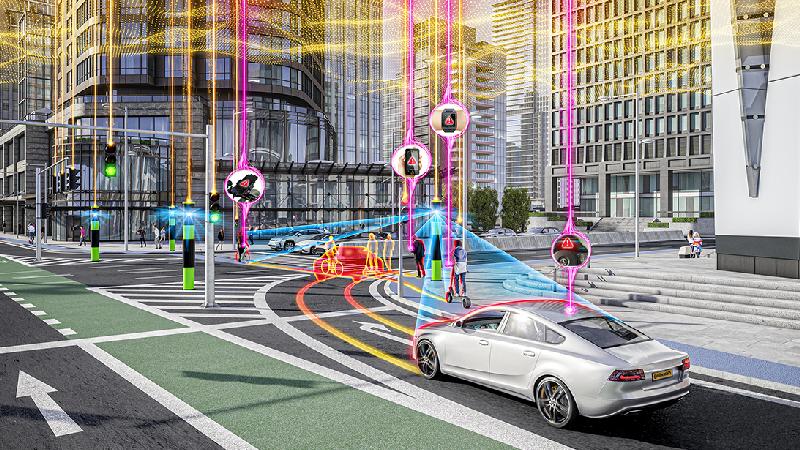
Continental showcased a collision warning system to protect vulnerable road users in the future at ITS World Congress in the German city of Hamburg.
The system – which is being further developed in collaboration with Deutsche Telekom, Vitronic, Stein Bildverarbeitungs and the city of Hamburg – warns of collisions in real-time using a smartphone.
For this, the Continental solution calculates the route over the next five seconds using GPS and speed data from cars and smartphones in a Telekom cloud computer in the vicinity.
The system uses data from traffic objects in intersection areas detected by Vitronic, stop light data and an accurate digital map provided by Hamburg. The warning of an impending collision is sent in real-time via Deutsche Telekom’s Low Latency Network to road users with the T-Systems app.
Continental says the application does not require dedicated hardware, meaning it can easily be integrated into apps from Deutsche Telekom or urban mobile applications, such as municipal transport providers.
According to Continental, the collision warning is integrated into the vehicle functions, so that drivers are warned immediately of imminent accidents.
Cars and cyclists transmit their position and acceleration to Telekom’s cloud computers. These then calculate the paths for the next five seconds and send a warning of any impending collision to the car and the cyclist’s terminal device in the event. The cloud computer is always active in the mobile network closest to the possible collision to ensure that this information reaches both road users as quickly as possible. Multi-access edge computing processes the GPS signal in combination with other position and navigation data to locate their smartphones with an accuracy of less than one metre.
Everyone who may be involved in an accident is notified in less than a second either by a warning on the assistance system in the car or by a visual and acoustic message with a vibration alarm on the smartphone, the company adds.
The technology, which is being funded by the Federal Ministry of Transport and Digital Infrastructure, is expected to be available for mass roll-out in 2024.

















